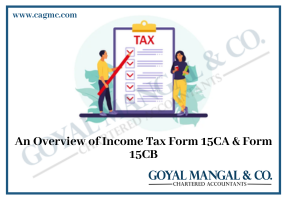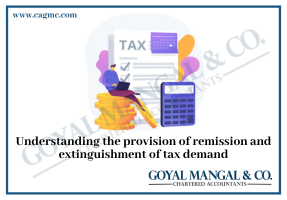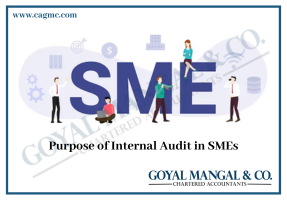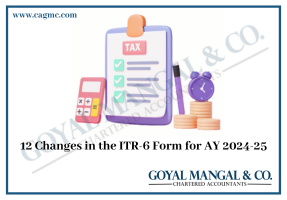
In a simple sense Loss, means the excess of expenses over income. Loss arises when income made during the financial year by the taxpayer is less than the expenditure during the year. There can be house property loss or capital loss or loss from business or profession or other income. In this blog, we will talk about the set-off of capital losses in ITR forms.
|
Table of Content |
Key Abstract
Losses cannot be set-off against income from other heads under capital gains; they can only be set-off within the heading ‘Capital Gains.’ Only long-term capital losses can be offset by long-term capital gains. Short-term capital losses can be deducted from both long-term and short-term earnings.
But before we shall move upon discussing set-off of capital losses in ITR forms, let us first discuss about Capital Losses.
Meaning of Capital Losses
A capital loss is a loss incurred when the value of a capital asset, such as an investment or real estate, decreases. This loss will not be realised until the asset is sold for a price less than the original purchase price.
A capital loss is the difference between the asset’s purchase and selling prices, where the selling price is less than the purchase price. For example, if an investor purchases a house for Rs 25 lakh and sells it five years later for Rs 20 lakh, the investor incurs a capital loss of Rs 5 lakh.
Set-off of Capital Losses
Under the Income Tax Act, 1961, the assets which are held by the taxpayer as an investment are treated as Capital Assets. The capital asset can be a building, land, or even shares and securities, etc. If the taxpayer sells his capital asset at a bigger value than the purchase price, he will gain from such capital asset. Conversely, if the sale proceeds of any capital asset are less than its buying price, then it results in capital loss.
The capital Losses under the Income Tax, Act, of 1961, are categorized as
- Long term capital loss and
- Short term capital loss
Long term capital loss
The Income Tax Act, 1961 has the following rules for set-off and carrying forward long term capital loss:
- The long term capital loss could be only set off against long term capital gain. This means that the set-off of long term capital loss is not possible against other incomes.
- If capital loss still exists, then it can be carried forward to the next financial year.
- The capital Loss could be carried forward to the next 8 financial years. But, if the capital loss continues after 8 financial years, then such loss shall be unavoidable.
Short term capital loss
The Income Tax Act, 1961 provides the following rules for set-off and carry forward of short-term capital loss:
- A short term capital loss can be set off against both long term and short term capital gain. Conversely, set-off of short term capital loss is not possible against other heads of incomes.
- If capital loss still exists, then it can be carried forward to the next financial year.
- The Capital Loss can be carried forward to the next 8 financial years. If the capital loss continues after 8 financial years, then such loss shall be an unavoidable situation.
Set-off of Capital Losses in ITR forms
Section 70(2) of the Income Tax Act, 1961, permits the assessee to have the STCL from any capital asset be set-off against any Capital Gain, whether ST or LT from any other capital asset.
Section 70(3) of the Income Tax Act, 1961, permits the assessee to have the LTCL from any capital asset be set off against LTCG from any other capital asset.
So, this means that the assessee shall allow to set off:
- A3e against B10e, and
- B5c against B10e
The arrangement of the ITR-3 form allows the assessee to set off A3e against B10e but compels him to set off B5c against B4e in complete contravention of the provisions of Section 70(3) of the Income Tax Act.
At this phase, it is not known if there are any other irregularities on the same lines for other items of set-off and this calls for a thorough re-examination of the ITR form.
In the meantime, the assessee finds himself in a strange spot. He cannot appeal against the rumours under Section 143(1) as there is no disallowance (assuming that the computations are approved in toto).
Long-term Loss Treatment on Shares and Equity Funds
If you sold shares or equity mutual fund units after 31.3.2018 and incurred a long-term capital loss, you can deduct it from any LTCG. Profits/gains on long-term shares or equity funds that exceed Rs.1 lakh are now taxable.
You can also carry these losses forward for setting off in later years for up to eight assessment years. Prior to March 31, 2018, there was no tax on long-term gains on stocks and equity funds, so long-term gains on stocks and equity funds were considered a dead loss. As a result, it was not permitted to begin or continue.
When held for more than a year, shares and equity funds are considered long-term capital assets.
Filing of Income Tax Return is Mandatory
To help you keep track of your losses, the income tax department has stated that losses for a year cannot be carried forward unless the Income Tax Return for that year is filed before the due date.
Even if it is a loss return and you have no income to show, file your return by the due date.
Conclusion
Therefore, section 70(2) of the Income Tax Act, 1961, permits the assessee to have the STCL from any capital asset be set-off against any Capital Gain, whether ST or LT from any other capital asset.







